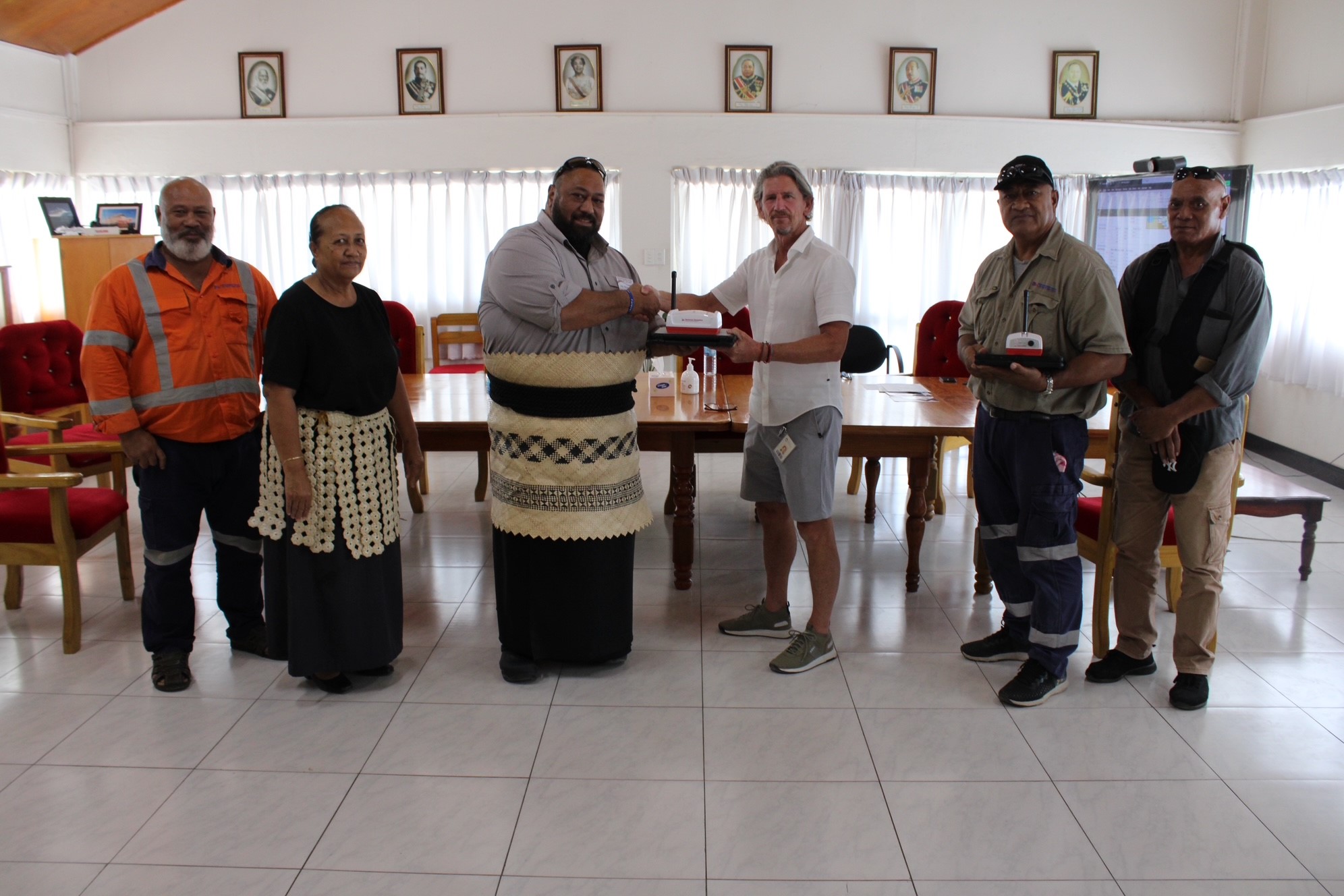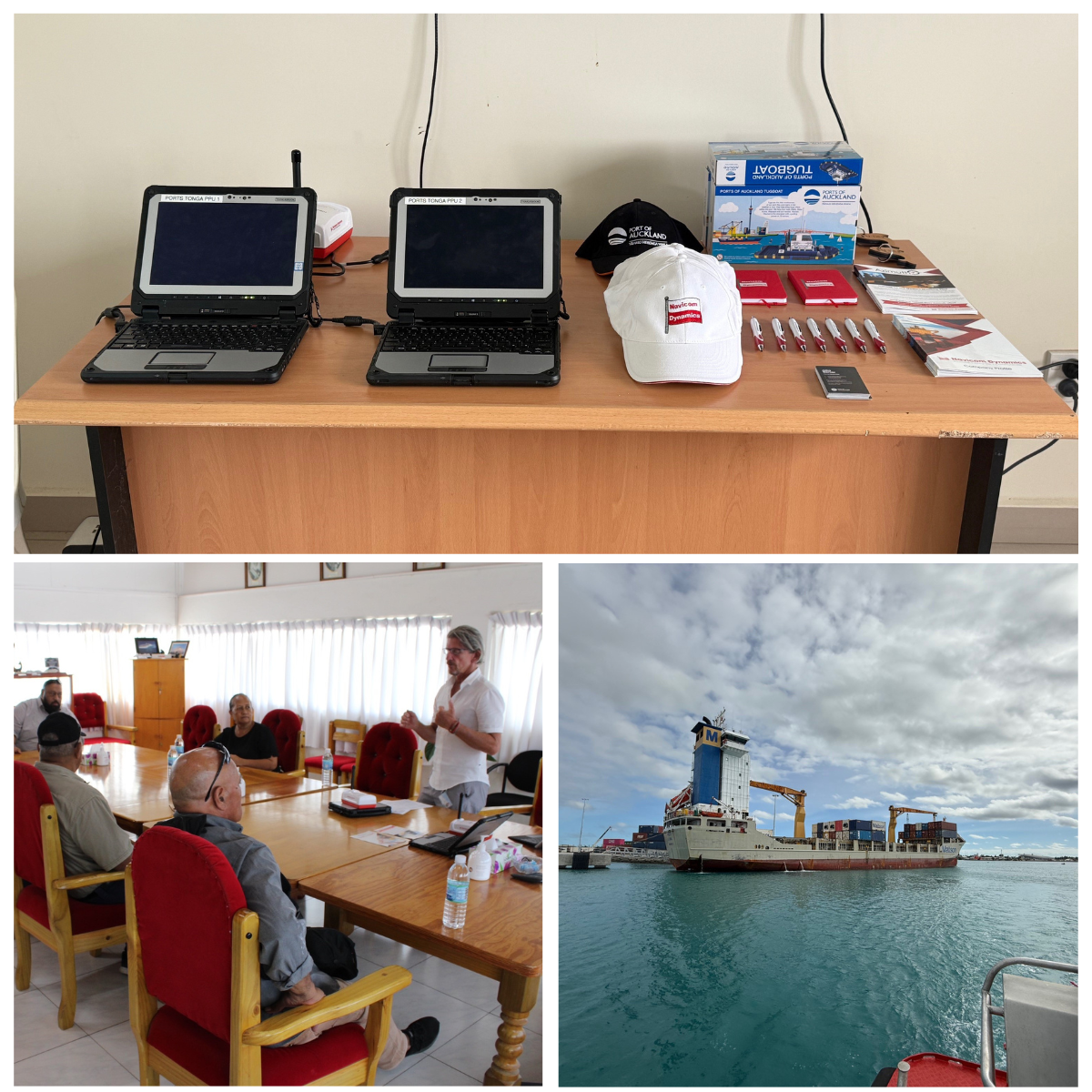As part of the Port of Auckland (POA) PPUs refresh programme, a select number of units are made available each year. The Upcycling Project initiative focuses on refurbishing these units for use by South Pacific Island pilot services. Launched last year with the refurbishment of the first unit for Rarotonga, this year’s project has successfully turned its attention to Tonga – and the results have been nothing short of exceptional!
This project, initiated by John Barker with full support from the Port of Auckland and Giles Lesser from OMC, united the expertise and resources of several key partners: the Port of Auckland, QPS, Marshland Consulting, OMC, and Navicom Dynamics.
Following in the footsteps of last year’s collaboration with Navicom and OMC in Rarotonga, the POA has now installed an AIS base station in Tonga. This installation significantly enhances local AIS target coverage and ensures that vital data is forwarded to Marine Traffic, providing the Port Authority of Tonga (PAT) with convenient online access to critical information.

The system, generously donated by the POA, includes a Navicom ChannelPilot sensor – refurbished by Navicom – and a tablet running Qastor 3.14 navigation software. This setup allows marine pilots to monitor pilotage with precision, offering safety monitoring, under-keel clearance (UKC) assessments, prediction tools, real-time data analysis, and accurate positioning for decision-making. The system’s recording functionality further supports review and training efforts.
Additionally, the pilots at Tonga Port received a full day of online training on how to effectively use the new equipment. The session was led by David Hedgley, Director of our Azimuth Learning Academy, ensuring that the pilots were well-prepared to maximise the system’s capabilities.

John Barker has also personally trained the three pilots from PAT, equipping them with the knowledge and skills needed to confidently operate the PPUs. The pilots are now excited to begin using these units on board vessels.
It is incredibly rewarding for us to be part of such a significant initiative. Supporting ports like PAT in embracing modern technology and best practices to enhance pilotage and overall port operations is something we are eager to continue, with plans to expand this project to other ports in the future.

